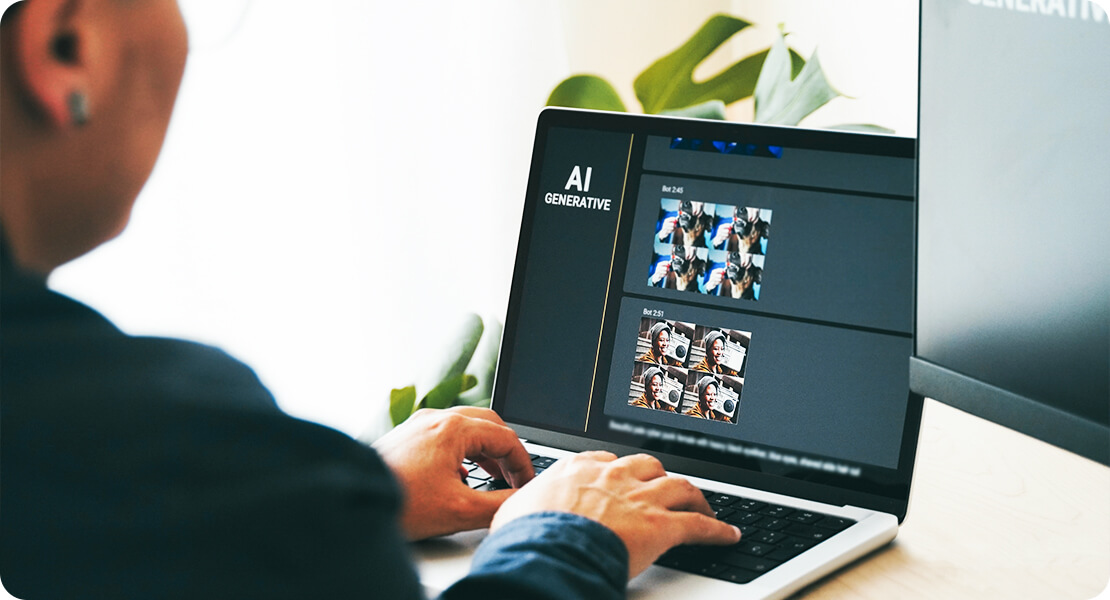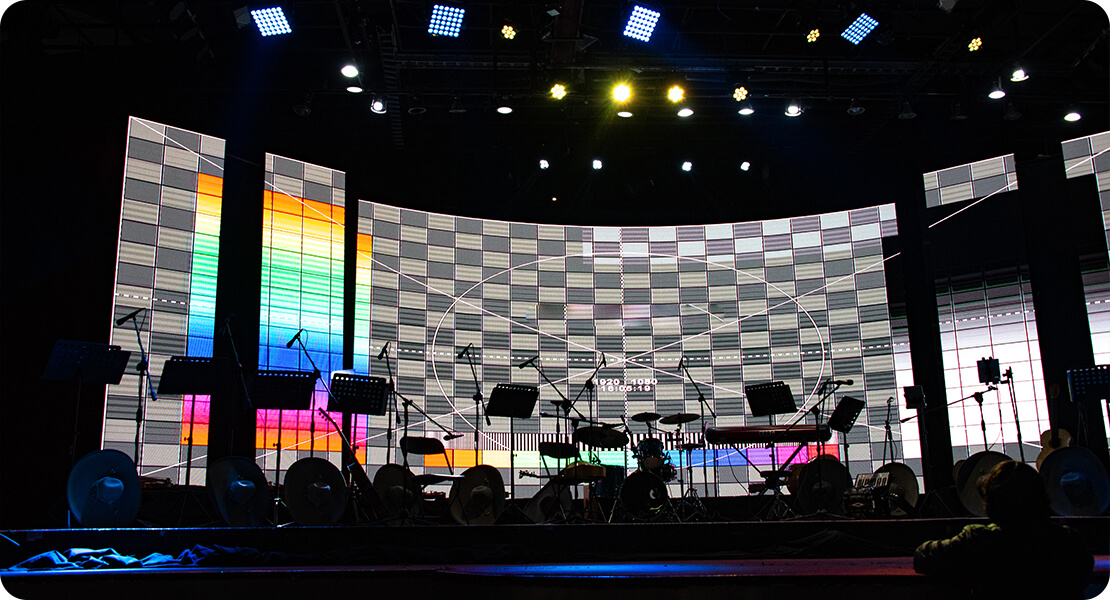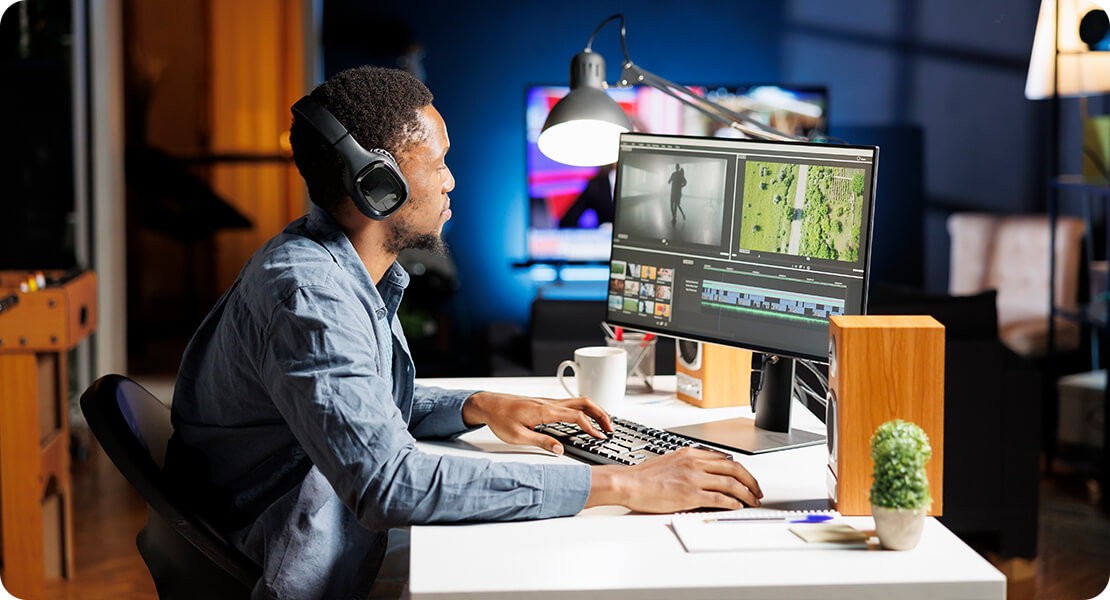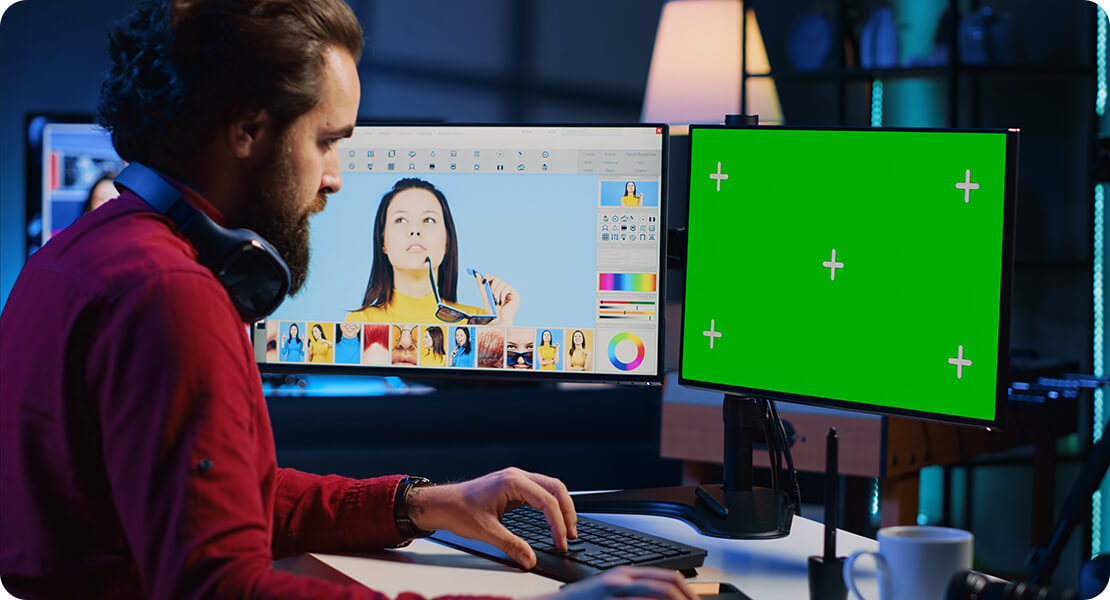
Video production is changing faster than ever, and if you’re in the industry — or even just dabbling — you’ll want to keep up with what’s around the corner. The tools, the techniques, and even the expectations of audiences are shifting. So, let’s dive into the top 10 advances in video production that are set to redefine the game over the next few years. Trust me, you’ll want to know what’s coming.
1. AI-Powered Video Editing Will Become the Norm
So, you know how editing can sometimes feel like it takes forever? Well, AI is stepping in to save the day. In the near future, AI-powered editing tools won’t just help you cut down on time — they’ll also enhance the creative process. These systems can already detect the best takes, sync audio automatically, and even adjust colour grading based on your preferred style. Soon, this tech will be built into everyday software, meaning more people can produce high-quality edits with minimal technical know-how.
What makes this especially exciting is the ability to personalise edits in real time. Imagine creating a video and being able to instantly switch the tone — say from dramatic to comedic — just by tweaking a few sliders. AI won’t just help with the technical bits; it’ll also offer suggestions for pacing, transitions, and visual effects, based on what works best for your genre. You won’t need to rely on gut instinct alone anymore.
Another interesting thing is how AI will streamline collaborative editing. Right now, passing a project between team members can be messy, but AI will manage timelines, track feedback, and even suggest revisions before a human editor gets involved. It’s like having an always-on assistant that’s laser-focused on quality.
And we’re not just talking about big-budget studios. These advances will trickle down into mobile apps and free software, meaning anyone with a smartphone could potentially produce studio-level edits. The barrier to entry is being lowered significantly, making video production more inclusive than ever.
Of course, this doesn’t mean traditional editors are out of a job. Quite the opposite — they’ll be freed up to focus on the creative and narrative aspects, rather than getting bogged down in repetitive edits. The creative freedom this allows is honestly thrilling if you ask me.
2. Virtual Production Will Replace Green Screens
Green screens have had their time in the spotlight, but virtual production is about to steal the show. If you’ve seen behind-the-scenes footage from productions like The Mandalorian, you’ll know what I’m talking about. Massive LED walls display real-time digital environments that respond to the camera’s movements. It creates a super immersive experience for actors and eliminates a lot of the guesswork in post.

One of the major perks here is realism. With traditional green screens, actors are often reacting to things that aren’t really there. That disconnect can sometimes show in the final performance. Virtual production, on the other hand, puts the entire scene in front of them — landscapes, lighting, even weather — making the performance feel more grounded and authentic.
Another huge plus is the flexibility it offers. Let’s say you need a sunrise shot but can’t shoot at dawn every day. With virtual production, you just dial in the lighting and boom — instant sunrise. You can shoot multiple locations in one day without moving a crew, which is a logistical dream and a money-saver too.
Plus, for those working with tight budgets, it could become surprisingly cost-effective over time. Once you’ve built a virtual environment, you can reuse it, tweak it, or expand on it without needing to book locations, arrange permits, or worry about weather delays. It’s a long-term investment that pays off in agility and control.
And here’s the fun bit — it’s not just Hollywood-level productions that can benefit. As the tech becomes more affordable and user-friendly, independent filmmakers, content creators, and even educators could make use of these immersive sets. It’s about democratising a previously inaccessible level of production value.
3. Real-Time Motion Capture Will Be Accessible to Everyone
Motion capture used to be the stuff of blockbuster budgets and studio-backed productions. But that’s changing — fast. In the near future, real-time motion capture will be within reach for creators at every level. You won’t need a studio full of sensors and actors in head-to-toe suits. With just a camera and the right software, you’ll be able to animate characters on the fly, whether you’re making a film, a game, or a virtual assistant.

The beauty of this is how it opens up creative possibilities. Let’s say you’re working on a short film with animated characters. Right now, that kind of project demands either hand animation or expensive gear. Soon, you’ll be able to act out scenes yourself and see the results live. It’s not only faster — it makes the process more human. You’ll see your vision come to life instantly, and that kind of feedback can totally transform how you work.
We’re also going to see big shifts in remote collaboration. Real-time motion capture lets teams in different parts of the world animate together, troubleshoot scenes instantly, and refine performances without ever being in the same room. It’s not just about speed — it’s about creative chemistry happening in real time.
There’s even potential beyond entertainment. Think training simulations, virtual presenters, educational avatars — all brought to life with natural, fluid motion. And because the tech is getting smarter, you won’t need to fine-tune every frame. The system will understand human movement better than ever and make it look good straight out of the box.
The knock-on effect of all this? Storytelling is going to evolve. When characters move in more lifelike, expressive ways — and when creators can bring them to life so easily — the emotional impact of video content will deepen. We’re about to enter an era where animation feels just as raw and real as live action.
4. Hyper-Personalised Videos Will Take Centre Stage
Personalisation has already taken over marketing, but video is the next big frontier. Imagine sending out a thousand video messages — each one tailored to the viewer’s name, preferences, even their recent activity — and all of it automated. That’s the direction we’re heading. Hyper-personalised video content will soon be the standard, not the exception.
This isn’t about just swapping out a name on screen. We’re talking fully dynamic content — different voiceovers, visual elements, product placements — all changing based on who’s watching. It’s powered by AI, data integration, and some very clever scripting behind the scenes. The end result? A viewer feels like the video was made just for them.
Marketers are going to love this, of course. But it’s not just for sales. Think about training videos that adapt to an employee’s role, or health information delivered in a way that fits a patient’s condition and age. Personalised video has the potential to make communication far more effective, because it’s relevant from the first second.
From a production standpoint, it’s a whole new mindset. Instead of creating one video, you’ll be thinking in templates — scenes that can be swapped, sequences that change, voiceovers that adapt. It’s like designing a film that can morph into thousands of variations without ever shooting a new frame.
And here’s the thing: as the technology matures, it’ll get easier to use. Small businesses, educators, and content creators will be able to tap into personalisation tools without needing a data science degree. When that happens, expect a surge in content that feels uniquely tailored — and an audience that’s far more engaged as a result.
5. Volumetric Video Will Transform the Viewing Experience
If you’ve never heard of volumetric video before, you’re not alone — but it’s about to become a big deal. Unlike traditional video, which captures images from a fixed perspective, volumetric video records space in 3D. That means you can move around a scene, see it from different angles, or even insert yourself into the action. It’s like giving viewers the ability to step into the frame.

Right now, this is mostly being explored in experimental or high-end productions. But the tools and workflows are quickly becoming more user-friendly. Soon, we’ll see this tech popping up in everything from documentaries and advertising to sports highlights and virtual concerts. It adds a whole new dimension to storytelling — literally.
One of the most exciting things is the freedom it gives the viewer. Rather than being locked into a director’s camera choice, the audience can explore scenes on their own terms. This is going to completely reshape how we think about cinematography. Directors won’t just be crafting a sequence — they’ll be designing an experience.
Volumetric video also plays perfectly with AR and VR. Imagine putting on a headset and watching a scene unfold right in front of you, with the ability to walk around the characters as if you were there. That kind of immersion isn’t just novel — it can be emotionally powerful. It makes the viewer feel present in a way traditional video never could.
Of course, with great tech comes new challenges. Shooting in 3D space requires different lighting, rigging, and performance styles. But once the early hurdles are worked out — and they will be — volumetric video is going to open up a new golden age of immersive media. And the best part? We’re only scratching the surface of what’s possible.
6. Neural Rendering Will Revolutionise Visual Effects
This one’s a bit sci-fi, but it’s real and coming fast. Neural rendering is a technique where AI fills in visuals using learned patterns, effectively generating realistic scenes or objects that weren’t there in the first place. We’re not talking about simple filters — this is about reconstructing facial movements, changing lighting across an entire scene, or even creating complex environments without needing full 3D models. It’s like having a visual effects team inside your computer.

What makes neural rendering so exciting is how much it can streamline the VFX pipeline. Right now, creating high-end effects often involves hours (or days) of manual work — motion tracking, compositing, lighting adjustment. Neural rendering can automate much of that, learning from existing footage and applying changes that look seamless and natural. You want to make a character look ten years older or swap the background with a moving 3D space? Neural rendering can make that look stunning with very little input.
But it’s not just about speed. The realism this tech can achieve is already jaw-dropping, and it’s only going to improve. We’re moving towards a point where synthetic footage — entirely generated by neural networks — could be indistinguishable from filmed material. That opens up massive potential for storytelling, especially for creators who have big ideas but not-so-big budgets.
It also brings up some ethical and creative considerations. If anything can be altered, how do we define “real” in a video context? That’s a question producers and audiences alike will need to grapple with. But from a purely creative standpoint, it’s thrilling. Neural rendering gives you a level of control over visuals that was unthinkable a few years ago.
Soon, we may even see these tools integrated directly into consumer-level editing platforms. That means creators of all levels could generate realistic, high-quality effects without specialist knowledge. So, whether you’re making a sci-fi short or tweaking a brand video, this tech is going to make your visuals pop in ways you’ve never imagined.
7. Cloud-Based Production Will Become the Industry Standard
Gone are the days of hard drives being passed around like hot potatoes. Cloud-based production is quickly becoming the default workflow, and that trend is only going to accelerate. Imagine storing, editing, reviewing, and sharing footage from anywhere in the world — all in real time, with zero physical storage devices required. That’s where we’re headed.
For teams spread across multiple locations, this is a game-changer. Editors in London can work on footage shot in Sydney while the director reviews cuts from LA — all at the same time. This kind of real-time collaboration saves time, reduces errors, and speeds up the entire production process. It also makes remote work truly viable for creative teams, something that’s becoming more important than ever.
The environmental impact is another major plus. Fewer shipments of physical media, reduced travel for post-production teams, and more efficient data handling all contribute to a greener production cycle. And let’s be honest — fewer lost USB drives is a win for everyone involved.
What’s really exciting is how this connects with automation and AI tools. Many cloud platforms now include AI features that transcribe interviews, tag scenes, detect faces, and even suggest edits. The cloud isn’t just about storage — it’s becoming an intelligent hub that actively improves your workflow.

Looking ahead, we’re likely to see more end-to-end platforms offering everything from pre-production planning to final delivery in one integrated space. For creators, that means less tech wrangling and more focus on telling a great story. And that’s exactly where your energy should be going.
8. Interactive Video Will Become Mainstream
You’ve probably seen a few choose-your-own-adventure-style videos floating around online. That’s interactive video — and it’s not just a novelty anymore. In the near future, expect this format to go from gimmick to standard feature across marketing, education, entertainment, and more.
What makes interactive video so powerful is the engagement it drives. Viewers don’t just sit back — they click, swipe, explore, and make choices. That kind of active participation keeps them watching longer and creates a deeper connection with the content. It’s no surprise that brands and educators are jumping on board in a big way.
But here’s the kicker — the tools for creating interactive video are becoming ridiculously easy to use. You don’t need a team of developers anymore. Drag-and-drop platforms let you build branching storylines, clickable hotspots, and in-video forms with zero coding. That means more creators, of all types, can get involved and experiment with this engaging format.
We’re also going to see more personalisation layered into interactive video. Think branching storylines that adapt based on a viewer’s previous choices, location, or even their viewing history. It’s going to feel more like a personalised journey than a standard play-through. That kind of depth has serious potential for everything from customer onboarding to immersive journalism.
For video producers, this represents a shift in mindset. You’re no longer making one linear story — you’re designing an experience with multiple paths and possible outcomes. It’s more work up front, sure, but the payoff is a more involved, responsive audience. And that’s worth every extra click.
9. Synthetic Media Will Blur the Line Between Reality and Creation
Synthetic media — basically content entirely generated by machines — is no longer confined to experiments and demos. It’s making its way into mainstream production, and fast. We’re talking about AI-generated presenters, completely virtual actors, and even news anchors that never sleep or age. Pretty wild, right? But it’s happening, and it’s going to change how videos are made, consumed, and perceived.

For video creators, synthetic media offers a powerful new toolbox. Imagine needing a spokesperson for a video but not having the time or budget to hire talent and film on location. With synthetic media, you can generate a realistic presenter, complete with lip-sync, tone, and personality, directly from text. It’s fast, scalable, and becoming incredibly lifelike. In fact, some viewers might not even realise they’re watching an AI.
But the real advantage goes beyond convenience. Synthetic media allows you to update content constantly without having to reshoot anything. Let’s say your product pricing changes — rather than redoing an entire video shoot, you can regenerate the dialogue or visuals in minutes. This opens up whole new ways to keep content fresh, current, and responsive to your audience’s needs.
There’s also a fascinating creative angle to all this. You could develop entirely fictional personas or characters that evolve across different campaigns. You can localise videos into multiple languages using a single synthetic presenter. You can even build entire brand stories around virtual characters — the kind of thing that once required animation teams or actors with long contracts.
Of course, with power comes responsibility. As synthetic media becomes more common, it raises questions around authenticity, misinformation, and ethics. Transparency will be key — but used responsibly, this technology can be a massive asset for video producers looking to scale creatively without being bound by traditional limitations.
10. 8K and Beyond: Ultra High Resolution Will Be the New Standard
For a long time, 4K was the gold standard in high-resolution video. But now, 8K — and even higher resolutions — are knocking on the door. And no, it’s not just overkill. Higher resolutions are becoming essential for future-proofing content, enabling massive screen displays, and allowing for high-quality digital cropping without any loss of detail. This is one advance that’s about more than just bragging rights.

Let’s start with the obvious benefit: clarity. 8K footage captures stunning detail — every texture, reflection, and subtle movement shows up like you’re seeing it in real life. For cinematographers, it’s a dream. You’ve got more freedom to reframe shots in post, zoom in without pixelation, and get crystal-clear slow motion. And with displays getting sharper every year, viewers are starting to expect that kind of visual fidelity.
But there’s another angle to consider — immersive content. 8K video is a perfect match for VR and AR applications. When the viewer is literally surrounded by the content, low resolution can break the illusion fast. With ultra-high resolution, you get smooth, lifelike environments that maintain realism even when viewed up close. It’s a key part of making immersive media truly believable.
For broadcasters and streamers, high-res content is also a way to stand out in a crowded space. Services are already rolling out 8K-ready platforms, and cameras capable of capturing this level of detail are becoming more affordable. So it’s not just for tech giants anymore. Indie filmmakers, YouTubers, and small studios are already starting to shoot in 6K or 8K, even if they’re delivering in lower resolutions — just for the flexibility it gives in editing.
Now, you might be thinking: “Do viewers even notice the difference?” And sure, most people won’t watch on an 8K screen tomorrow. But it’s coming, and producers who get ahead of the curve now will have libraries of content that still look brilliant ten years down the line. So whether it’s about sharpness, cropping power, or future compatibility — higher resolution is becoming a must-have.
Final Thoughts
So, there you have it — ten advances that
are poised to reshape how we produce and experience video in the near future.
From AI-driven editing and virtual sets to synthetic characters and ultra-high
resolution, the toolkit for creators is expanding fast. But here’s the key
takeaway: it’s not just about having more tech. It’s about how you use it to
tell stories, connect with people, and make content that feels real, relevant,
and remarkable.
If you’re in video production — or even thinking about jumping in — this is an
amazing time to start exploring. The barriers are lower, the possibilities are
broader, and the tools are smarter than ever. So whether you’re a seasoned pro
or a curious creator, there’s never been a better moment to experiment,
innovate, and push your ideas to new heights.
And if you’re looking for cutting-edge video production tailored to your
business, feel free to get in touch with us here at Spiel — we’d love to help bring your vision to life.

